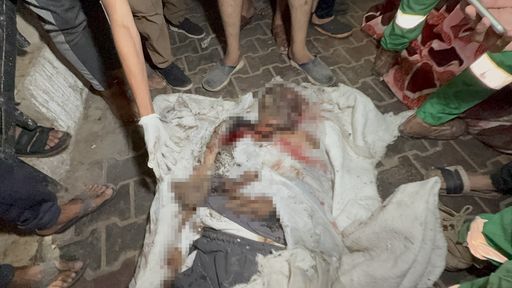Israeli forces killed six Al Jazeera journalists in a strike on Gaza City on Sunday, then accused one of them of being a Hamas leader, adding to a pattern of smearing journalists after killing them.
On Sunday, Qatari broadcaster Al Jazeera said its Gaza correspondents Anas al Sharif and Mohammed Qreiqeh were killed alongside camera operators Ibrahim Zaher, Mohammed Noufal, and an unnamed assistant when Israeli forces bombed a tent used by media near Al Shifa Hospital.
The Israeli military admitted it had deliberately targeted Al Sharif, accusing him of being a “terrorist” heading a Hamas cell involved in rocket attacks, allegations dismissed as baseless by Al Jazeera.
Labelling journalists ‘terrorists’
Hours after the incident, the Committee to Protect Journalists (CPJ) released a statement condemning the killings.
“Israel has a longstanding, documented pattern of accusing journalists of being terrorists without providing any credible proof,” said CPJ Regional Director Sara Qudah, adding that Al Sharif was the latest in a series of such cases.
“Journalists are civilians and must never be targeted. Those responsible for these killings must be held accountable,” the statement read.
Al Sharif, one of Gaza’s most recognisable reporters, had 1.6 million Instagram followers and had been documenting the war through major news outlets and his own social media.
In July, an Israeli army spokesperson claimed Al Shari had been a member of Hamas’s armed wing since 2013, according to CPJ.
At the time, Al Sharif told the media watchdog that the allegation was “a real-life threat” meant to “assassinate me morally” for covering Israeli actions in Gaza.
Weeks before his death, he reported on the starvation facing himself and his colleagues because of Israel’s refusal to allow enough food aid into the territory.
Documented pattern of killings
Sunday’s strike adds to a long record of Israel killing Palestinian journalists and then accusing them of Hamas ties.
In March 2025, another Al Jazeera correspondent named Hossam Shabat was killed in northern Gaza. The Israeli military claimed he was a Hamas sniper, but provided no evidence. Reporters Without Borders and CPJ condemned the strike as a targeted killing.
Since the war began, CPJ has documented 186 journalists killed, 178 of them Palestinians killed by Israel.

Silencing witnesses amid occupation plans
The killings come as Israeli Prime Minister Benjamin Netanyahu faces mounting global backlash over Gaza’s humanitarian crisis.
His government is pressing ahead with a cabinet decision to occupy Gaza City, despite rising opposition and a growing number of Western governments preparing to recognise a Palestinian state at the United Nations in September.
In recent days, at a press conference announcing plans to expand military operations and occupy Gaza City, Netanyahu took aim at the New York Times.
Pointing to its front page featuring a photograph of an emaciated Palestinian child which he labelled “fake,” Netanyahu said he was considering a government lawsuit against the paper.
This is despite a UN-backed report warning of a worst-case scenario of famine unfolding in Gaza as well as widely documented deaths of children from acute malnutrition reported by humanitarian agencies.

With Israel barring international reporters from Gaza, much of this evidence in the form of photographs and video has been gathered by local journalists like Al Sharif, whose work has fuelled calls for accountability and intensified diplomatic, legal, and public-relations pressure on Israel.
In July, Al Sharif told CPJ that Israel accused him of Hamas ties because his reporting exposed its actions in Gaza and hurt its image abroad.
“All of this is happening because my coverage of the crimes of the Israeli occupation in the Gaza Strip harms them and damages their image in the world,” he told the media watchdog.
“They accuse me of being a terrorist because the occupation wants to assassinate me morally.”




















